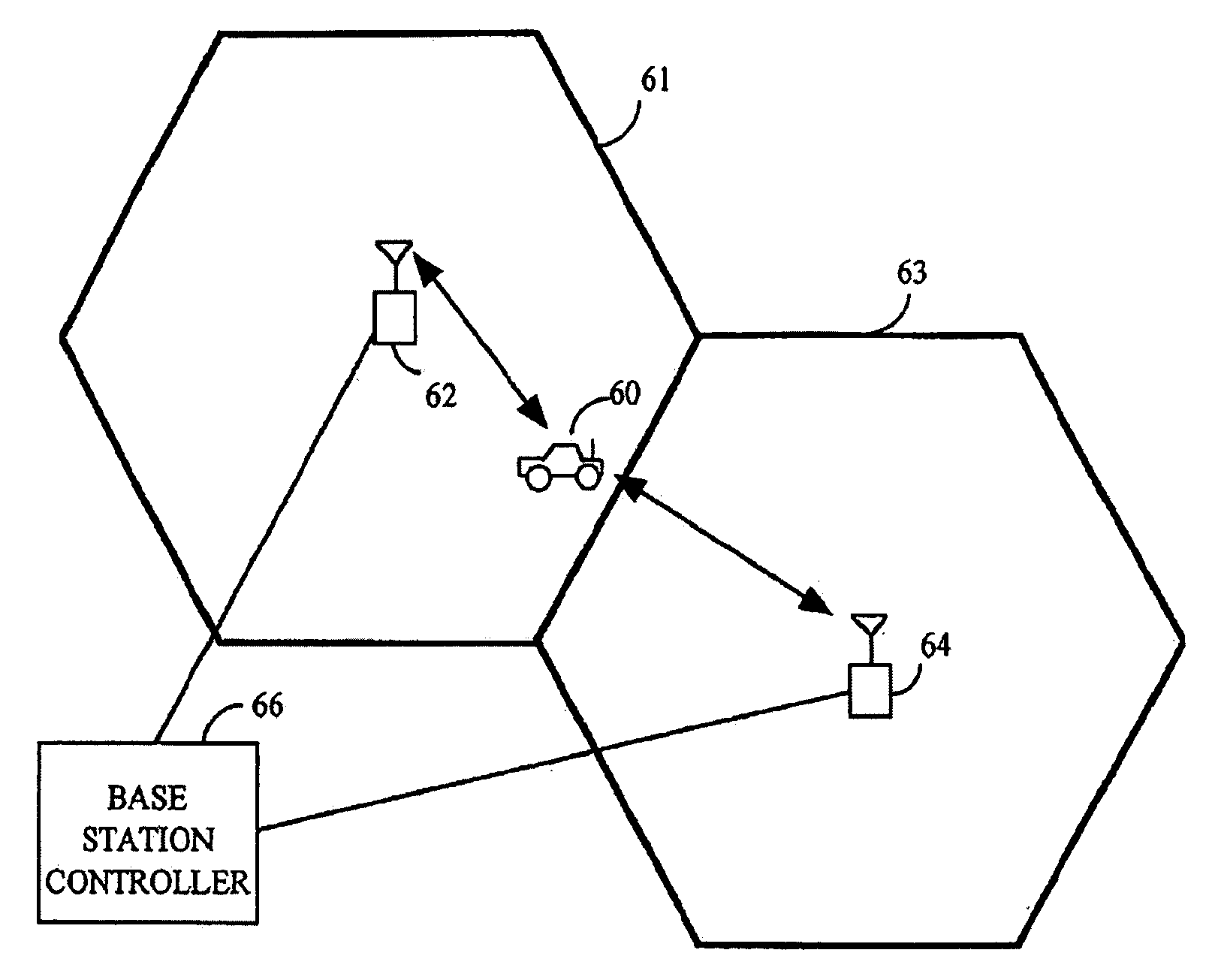Mobile station assisted timing synchronization in a CDMA communication system
- Summary
- Abstract
- Description
- Claims
- Application Information
AI Technical Summary
Benefits of technology
Problems solved by technology
Method used
Image
Examples
Embodiment Construction
[0032]Overview of Timing Error Computation
[0033]Referring to FIG. 1, mobile station 60 is in communication with reference base station 62, while it is roughly within the coverage area delineated by base station coverage boundary 61. Reference base station 62 is synchronized to the rest of the network by means of a central timing system such as the global positioning system (GPS). In contrast, slave base station 64, with a coverage area delineated by coverage boundary 63, is not synchronized to the central timing system by independent means, such as the GPS available to base station 62. Base station controller 66 routes calls from the public switched telephone network (PSTN) to a base station 62 or 64 by means of a T1 line or other means. In addition, frequency synchronization is provided to slave base station 64 through T1 lines.
[0034]For short time periods, frequency synchronization can be provided with an acceptable degree of accuracy through T1 lines by methods well known in the ...
PUM
 Login to view more
Login to view more Abstract
Description
Claims
Application Information
 Login to view more
Login to view more - R&D Engineer
- R&D Manager
- IP Professional
- Industry Leading Data Capabilities
- Powerful AI technology
- Patent DNA Extraction
Browse by: Latest US Patents, China's latest patents, Technical Efficacy Thesaurus, Application Domain, Technology Topic.
© 2024 PatSnap. All rights reserved.Legal|Privacy policy|Modern Slavery Act Transparency Statement|Sitemap



